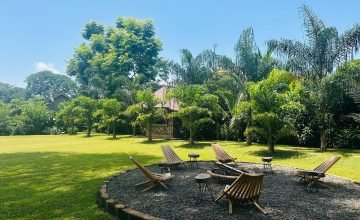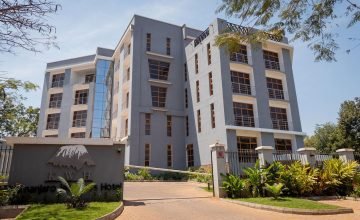8-Days Mount Kilimanjaro Trek – Northern Circuit Route Overview
The Northern Circuit Route is Kilimanjaro’s longest and most spectacular trail, offering unmatched panoramic views and the highest summit success rate. Starting from the western side at Lemosho Gate, the route loops around the northern slopes of the mountain, providing a peaceful and remote trekking experience far from the more crowded southern paths.
This 8-day adventure allows for excellent acclimatization as you journey through diverse ecosystems — from lush rainforest and heather moorland to the alpine desert and arctic summit zones. Along the way, you’ll enjoy breathtaking views of Mount Meru, the Shira Plateau, and the vast Kenyan plains, while camping at some of Kilimanjaro’s most scenic sites.
With Leen Adventures, you’ll be guided by an experienced mountain crew dedicated to your safety, comfort, and enjoyment — creating the perfect balance of challenge and discovery on your way to Uhuru Peak (5,895 m), the majestic Roof of Africa.
📒 Please Note:
This trek begins and ends in Moshi or Arusha, mountain gear, and pre/post-climb accommodation are not included but can be arranged upon request.
8-Days Mount Kilimanjaro Trek – Northern Circuit Route Details
8 Days Northern Circuit Route Highlights
8 Days Mount Kilimanjaro Northern Circuit Route – Detailed Itinerary
Arrival Day
Upon arrival at Kilimanjaro International Airport (JRO), you’ll be warmly welcomed by a Leen Adventures representative and transferred to your hotel in Moshi. Take time to unwind, organize your gear, and get ready for the adventure ahead. In the evening, you’ll meet your mountain guide for a comprehensive trek briefing and equipment check.



Day 1: Lemosho Gate (2,360 m) – Mti Mkubwa Camp (2,820 m)
Distance: 6 km | Hiking Time: 3–4 hours | Habitat: Rainforest
Begin your adventure at Lemosho Gate, where registration is completed before a short drive to the trailhead. The trek starts through lush montane rainforest alive with the sounds of colobus monkeys and tropical birds. The path climbs gradually under thick canopy until reaching Mti Mkubwa Camp (Big Tree Camp), set beneath towering trees. Enjoy your first warm meal and evening briefing.
Day 2: Mti Mkubwa (2,820 m) – Shira 1 Camp (3,610 m)
Distance: 8 km | Hiking Time: 5–6 hours | Habitat: Moorland
After breakfast, the trail leaves the rainforest and enters the open moorland. You’ll climb steadily up to the Shira Plateau, crossing several ridges and streams along the way. The views expand dramatically, revealing Mount Meru and the vast plains below. Arrive at Shira 1 Camp, where you’ll rest and enjoy a stunning sunset over the western slopes.
Day 3: Shira 1 (3,610 m) – Moir Hut (4,200 m)
Distance: 12 km | Hiking Time: 5–7 hours | Habitat: Alpine Desert
Set out across the sweeping Shira Plateau, one of Kilimanjaro’s most striking landscapes. The trail gradually climbs through alpine meadows and rocky formations, offering spectacular views of Mount Meru. The terrain becomes more rugged as you ascend toward Moir Hut, a remote campsite beneath the Lent Hills. Optional hikes up the hills offer excellent acclimatization and panoramic vistas.
Day 4: Moir Hut (4,200 m) – Buffalo Camp (4,020 m)
Distance: 12 km | Hiking Time: 5–7 hours | Habitat: Alpine Desert
After breakfast, the trail climbs out of Moir Valley and joins a series of ridges leading to Buffalo Camp. Along the way, enjoy sweeping views of the northern plains stretching into Kenya. The path has gentle ascents and descents, making it a good acclimatization day. Arrive at Buffalo Camp in the afternoon, where you’ll rest and enjoy the tranquil, remote surroundings.
Day 5: Buffalo Camp (4,020 m) – Third Cave Camp (3,850 m)
Distance: 8 km | Hiking Time: 5–6 hours | Habitat: Moorland
Continue your eastward journey across Kilimanjaro’s quiet northern slopes. The terrain undulates gently with occasional sightings of large birds and antelope in the distance. The route offers a mix of rocky paths and soft volcanic soil. By early afternoon, arrive at Third Cave Camp, located in a dry, rugged area beneath the imposing Kibo peak. Take the afternoon to rest or enjoy a short acclimatization hike with your guide
Day 6: Third Cave (3,850 m) – School Hut (4,750 m)
Distance: 6 km | Hiking Time: 4–5 hours | Habitat: Alpine Desert
After breakfast, the trail continues with a gradual ascent toward the eastern side of Kibo. The air becomes thinner, and vegetation fades into barren alpine desert. You’ll reach School Hut, your final camp before the summit attempt. Have an early dinner and rest as you prepare for the midnight ascent to Uhuru Peak.
Day 7: Summit Day – Uhuru Peak (5,895 m) – Mweka Camp (3,100 m)
Altitude: 4,750 m → 5,895 m → 3,100 m
Distance: 15 km | Hiking Time: 12–14 hours | Habitat: Arctic to Rainforest
Begin your summit push around midnight, ascending slowly through switchbacks toward Gilman’s Point (5,681 m). From there, continue around the crater rim to Uhuru Peak (5,895 m) — the Roof of Africa. Celebrate your success with photos and awe-inspiring sunrise views across the glaciers. Afterward, descend to Barafu Camp for brunch, then continue to Mweka Camp, where you’ll spend your final night on the mountain.
Day 8: Mweka Camp (3,100 m) – Mweka Gate (1,640 m) – Moshi/Arusha
Distance: 10 km | Hiking Time: 3–4 hours | Habitat: Rainforest
Enjoy your final descent through lush rainforest filled with birdlife and fragrant vegetation. Upon reaching Mweka Gate, you’ll receive your summit certificate — a proud token of your accomplishment. Your driver will transfer you to Moshi, where a hot shower and a celebratory dinner await.



Departure Day
After breakfast, enjoy your final morning in Tanzania before being transferred to Kilimanjaro International Airport (JRO) for your flight home or onward journey. You may also choose to extend your adventure with a thrilling Tanzania safari or a relaxing Zanzibar beach getaway — both of which can be seamlessly arranged by Leen Adventures.
🎒 Optional Gear & Rentals
Enhance your Mount Meru trekking experience with these optional gear add-ons. All equipment is subject to availability, so early booking is recommended.
💰 Tipping Guidelines
Tipping is an important tradition on Mount Meru treks. Your mountain crew—including lead guides, assistant guides, cooks, and porters—work tirelessly to support you during the climb, and tips are a meaningful way to show appreciation for their dedication and effort.
Suggested Tipping Rates:
Tips are usually handed over at the farewell ceremony at the park gate on the last day of the trek. It is best to place tips in an envelope and give them to the lead guide, who will distribute fairly among the team.
Tips should be in US Dollars (clean, undamaged notes) or Tanzanian Shillings. While tipping is not mandatory, it is customary and greatly appreciated. For larger groups, tips are often shared equally among trekkers.